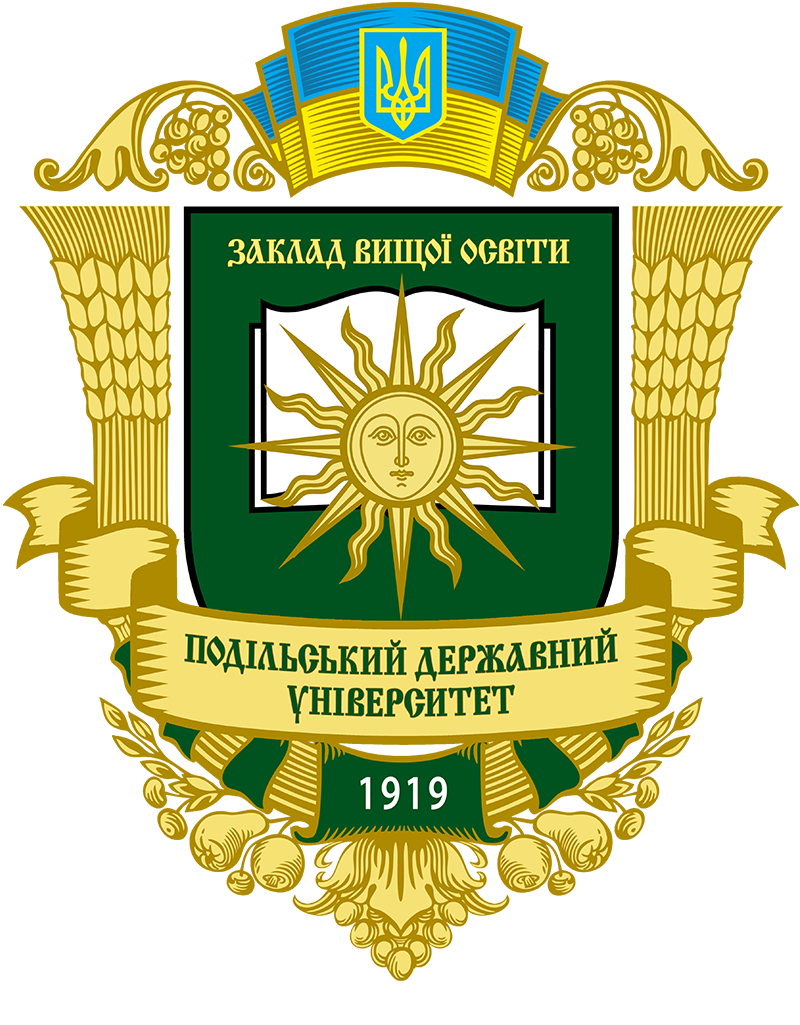BIOTECHNOLOGICAL PRACTICES FOR GROWING CORN FOR GRAIN UNDER DIFFERENT PREDECESSORS IN THE CONDITIONS OF THE UKRAINIAN STEPPE
DOI:
https://doi.org/10.37406/2706-9052-2024-2.1Keywords:
corn, yield, productivity, grain units yield, feed units yield, digestible protein units.Abstract
An important factor that determines the grain yield and productivity of corn is the previous crop. In the conditions of insufficient moisture in the Steppe region of Ukraine, the significance of the predecessor is determined by the accumulated moisture reserves. It is believed that the best predecessors for corn in the Steppe conditions are winter wheat and leguminous crops, while satisfactory ones are corn and barley, with sunflower considered a poorer predecessor. Corn can be grown in both repeated plantings and monoculture, but the agronomic practices affecting crop productivity in such crop rotations have not been studied sufficiently. A stationary study was established in 2005 at the Institute of Agriculture of the Steppe NAAS, with soil and climatic conditions corresponding to the Northern Steppe zone of Ukraine. A simple modified mid-ripening hybrid DK Veles was sown in the study. Seed inoculation was carried out with the biopreparation Mycofriend. The research results indicate that the predecessor was a significant factor influencing the formation of grain yield and productivity indicators of corn. When growing corn after soybeans, the average grain yield was 5.31 t/ha, after sunflower and corn predecessors it was 3.03 t/ha and 3.25 t/ha respectively, with no significant difference in yield between sunflower and corn predecessors. There was no significant increase in corn grain yield due to the action of the biopreparation factor, with a yield increase ranging from 0.01–0.06 t/ha, but a more active effect of the biopreparation was noted with the sunflower predecessor. Higher productivity indicators for grain units yield, feed units yield, and digestible protein units were achieved when growing corn after soybeans – 6.43 t/ha, 9.65 t/ha, and 0.573 t/ha respectively. There was no significant difference in productivity indicators between the sunflower predecessor and repeated corn cultivation. The highest indicators for grain units yield, feed units yield, and digestible protein units were obtained under the condition of seed inoculation with the biopreparation after the soybean predecessor – 6.44 t/ha, 9.68 t/ha, and 0.575 t/ha respectively.
References
Amons S. Productivity of corn hybrids depends on growing technological methods. Agriculture and forestry. 2023. № 28. Р. 25–45. https://doi.org/10.37128/2707-5826-2023-1-3.
Joop C. van Lenteren, Karel Bolckmans, Ju¨rgen Ko¨hl, Willem J. Ravensberg, Alberto Urbaneja. Biological control using invertebrates and microorganisms: plenty of new opportunities. BioControl. 2018. V. 63. Р. 39–59. https://doi.org/10.1007/s10526-017-9801-4.
Marcelo S. de Farias, Ravel F. Dagios, Antônio L. Santi, Maurício R. Cherubin. Productivity of corn hybrids in relation to sowing overlap. Scientific Paper, Agricultural Machinery Management. Eng. agríc. (Online) 2020. № 40 (4). Jul – Aug. https://doi.org/10.1590/1809-4430-Eng.Agric.v40n4p489-494/2020.
Marcos da Silva Brum, Vinícius Dos Santos Cunha, éssica Deolinda Leivas Stecca, uiz Fernando Teleken Grando, Thomas Newton Martin. Componentes do rendimento da cultura do milho sob inoculação de Azospirillum brasilense em sistema de integração lavoura-pecuária. Аcta Scientiarum. Agronomy. 2016. Vol. 38. № 4. Р. 485–492. https://doi.org/10.4025/actasciagron.v38i4.30664.
Sokolovska I., Maschenko Yu. Biotechnological methods of growing sunflower in different fertilizer systems. Journal HELIA. Walter de Gruyter GmbH, Berlin/Boston, 2023-11-22. T. 46. № 79. С. 233–243. https://doi.org/10.1515/helia-2023-0011.
Волощук О.П., Глива В.В., Пащак М.О. Продуктивність гібридів кукурудзи залежно від різних норм внесення мінеральних добрив у західному Лісостепу України. Передгірне та гірське землеробство і тваринництво. 2020. Вип. 68 (I). С. 51–66. https://doi.org/10.32636/01308521.2020-(68)-1-4.
Системні фактори регулювання зернової продуктивності кукурудзи в різноротаційних сівозмінах степової зони / Л.М. Десятник, М.С. Шевченко, Н.В. Швець, А.А. Хижняк. Зернові культури. 2019. Т. 3. № 1. 37–44. https://doi.org/10.31867/2523-4544/0058.
Каленська С.М., Говенько Р.В. Продуктивність кукурудзи залежно від забезпечення тепловими одиницями та живлення різними видами азотних добрив. Наукові праці Інституту біоенергетичних культур і цукрових буряків. 2020. № 30. С. 33–43. https://doi.org/10.47414/np.30.2022.268943.
Продуктивність сортів і гібридів кукурудзи за різних систем удобрення та беззмінного їх вирощування / А. Кохан, Л. Глущенко, О. Лень, Р. Олепір, О. Самойленко. Вісник аграрної науки. 2019. № 10 (799). С. 18–23. https://doi.org/10.31073/agrovisnyk201910-03.
Особливості управління врожайністю кукурудзи в умовах нестійкого зволоження / М.М. Маренич, В.О. Капленко, К.В. Коба, О.Р. Голуб. Вісник Полтавської державної аграрної академії. 2019. № 4. С. 43–50. https://doi.org/10.31210/visnyk2019.04.05.
Мащенко Ю.В., Соколовська І.М. Продуктивність кукурудзи залежно від її частки в сівозміні та удобрення. Аграрні інновації. Серія «Меліорація, землеробство, рослинництво». 2023. № 21. С. 57–63. https://doi.org/10.32848/agrar.innov.2023.21.8.
Пустовий С.І., Якунін О.П., Дудка М.І. Агроекономічна ефективність вирощування зерна гібридів кукурудзи залежно від попередника і мінерального удобрення. Таврійський науковий вісник. 2021. № 117. С. 142–148. https://doi.org/10.32851/2226-0099.2021.117.19.
Пустовий С.І., Якунін О.П., Дудка М.І. Вплив попередника, мінерального живлення на формування урожайності зерна гібридів кукурудзи. Таврійський науковий вісник. 2020. № 116. Частина 2. С. 68–73. https://doi.org/10.32851/2226-0099.2020.116.2.10.
Соколовська І.М., Мащенко Ю.В. Біотехнологічні прийоми вирощування гречки за різного удобрення. Таврійський науковий вісник. 2023. Вип. 130. С. 240–246. https://doi.org/10.32851/2226-0099.2023.130.35.
Сучасні системи землеробства і нове трактування сівозмінної цінності сільськогосподарських культур / М.С. Шевченко, Л.М. Десятник, К.А. Деревенець-Шевченко, Н.В. Швець. Зернові культури. 2020. Т. 4, № 2. С. 319–329. https://doi.org/10.31867/2523-4544/0141.
Шерстобоєва О.В., Бунас А.А., Дем’янюк О.С. Вплив попередників та передпосівної інокуляції насіння штамом Azotobacter Vinelandii 12m на врожайність кукурудзи і активність процесу азотфіксації. Агрономія. 2020. № 1. С. 120–126. https://doi.org/10.33730/2310-4678.1.2020.203941.
Біологізація землеробства в Україні, реалії та перспективи / І. Шувар, Б. Шувар, Б. Костюк, Н. Колесник, В. Гнидюк. Симфонія форте. 2016. 138 с. https://www.yakaboo.ua/ua/biologizacija-zemlerobstva-v-ukraini-realii-ta-perspektivi.html.










